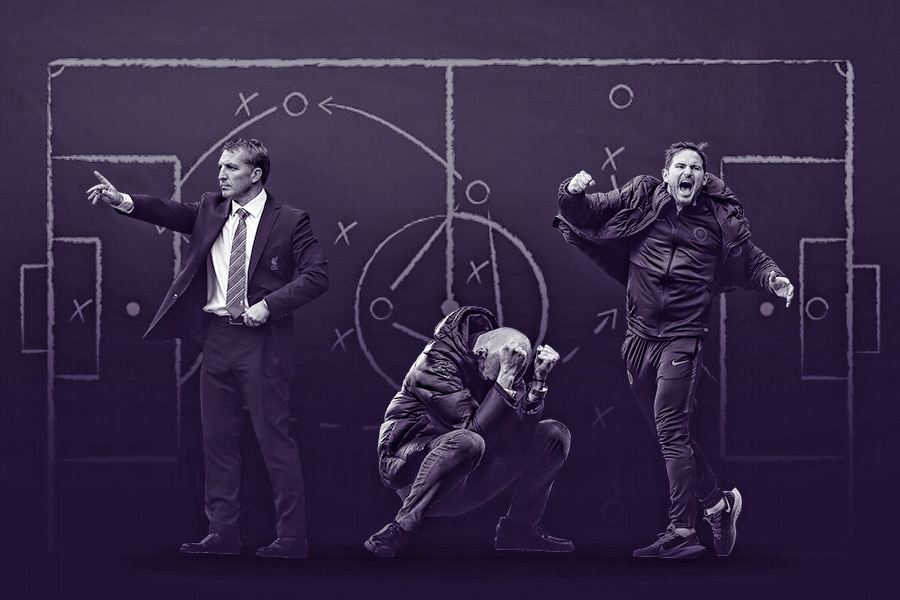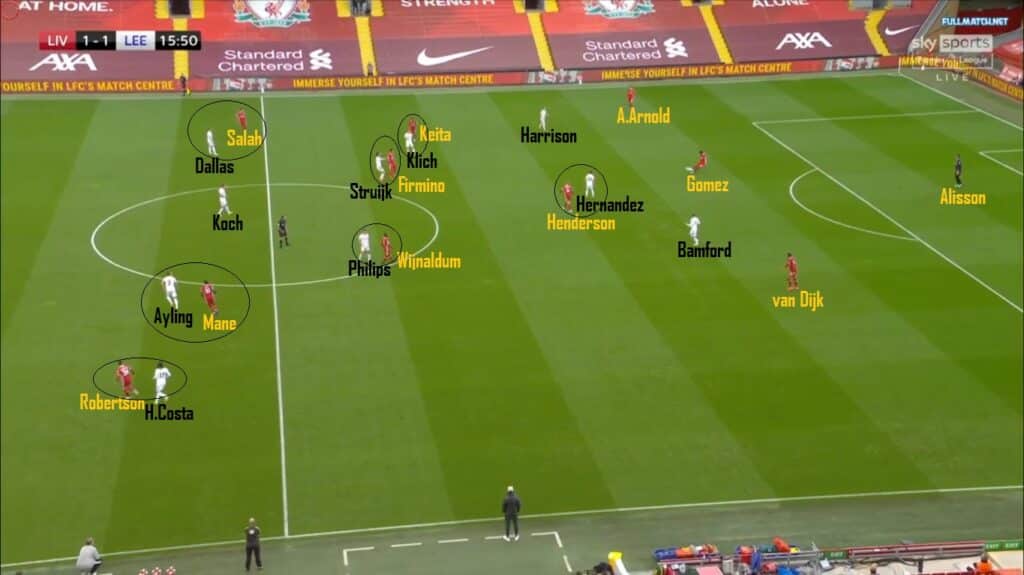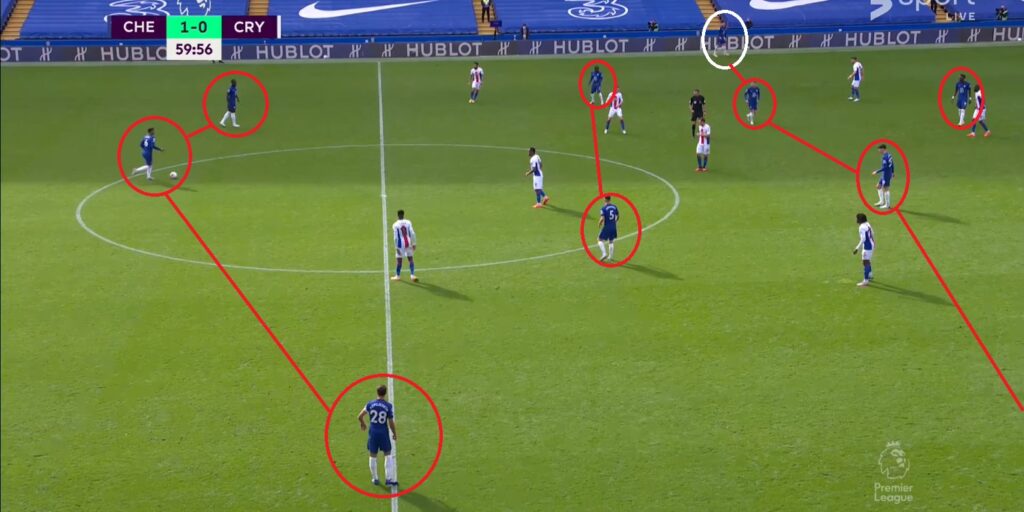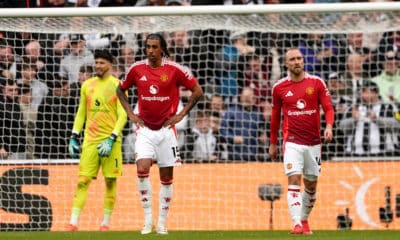
After four rounds of Premier League football, we look at some of the most interesting tactical themes and innovations used by the coaches.
Leeds’ Man Marking
Without doubt, the side that’s provided the most tactical intrigue for neutrals has been Marcelo Bielsa’s Leeds United. The main reason for this is the side’s full pitch man-marking with nine outfield players literally tracking an opponent player around the field, with one spare man at the back for Leeds. Therefore, one opposition centre back is left free, but often with no teammates to pass to.

That has seen some enterprising play by opposition centre backs to drive forward into space with the ball. This is an attempt to try and draw an opposition marker whilst one-v-one actions in central midfield have also caused problems for Bielsa’s team. Many of their games resemble basketball matches, such is the threat they carry going forward. But this also means space opens up for opponents who can bypass the marking. So far, they have massively overperformed their Expected Goals and that is generally hard to maintain over a season.
Whether the Argentine’s side can maintain their incredible intensity and buy-in over the season remains to be seen. His Athletic Bilbao side dipped towards the end of the season because of fatigue. Leeds also lost out of promotion in 2018-19 when Bielsa’s side had a big drop in results after Christmas.
City’s Double Pivot
After the loss of David Silva, Pep Guardiola started this season by deviating from his most effective shape, a 4-3-3 with a single holding player and two half-space eights. He has played a 4-2-2-2 at times in the past, most notably as Kevin De Bruyne and Phil Foden destroyed Arsenal last season. It is rare for the Spaniard to play two genuine holding midfielders in a 4-2-3-1 shape. As De Bruyne gets on a little in years (he is now 29) and Fernandinho readjusts to a midfield role after largely playing centre back last season, City have not functioned as well.
Guardiola returned to a shape with a single holding player for the pulsating, frankly bonkers 1-1 draw with Leeds United. However, his side gave up an enormous amount of chances. Whilst there are valid questions over the performances of defenders, the lack of protection for the backline has been alarming.
Leeds created 2.9 Expected Goals and really should have beaten City by a significant margin:
xG map for Leeds – Man City
— Caley Graphics (@Caley_graphics) October 3, 2020
a Premier League classic only held back by some really bad finishing and good goalkeeping pic.twitter.com/nXRfNTNG9W
Palace’s Compact 4-4-2
For much of last season, Roy Hodgson used a 4-5-1 shape with his Crystal Palace side, with three genuine central midfielders and Wilfried Zaha on the left. However, since the restart in June, he has reverted to a 4-4-2. This is his tried and tested shape from his days at Fulham and much of the early part of his reign at Selhurst Park.
This has seen Zaha freed up somewhat to lead counter-attacks from a more central and slightly more advanced position. Whilst he has to screen passes into the opposition’s central midfielders alongside Jordan Ayew, he at least does not have to be an auxiliary fullback. In some games last season, he sat deep and tracked opposition right-backs with real diligence.
This change of shape has seen Zaha look much more effective going forward. He caused causing nightmares for Man Utd’s centre back pairing and had several chances (and scoring the winner) in the opener against Southampton.
A key reason why that shape worked so well in the first two league games, in particular, was the excellent work of Jeffrey Schlupp as a shuttler on the left. The Ghanaian can protect his fullback, thicken central midfield by tucking inside.and use his speed and ball-carrying to bring the ball up the pitch on transitions.
At times last season, he even played on the left of a central midfield three and did a similar job. He has missed the last two league games with injury and that left flank has looked far less secure. This was the case in defeats to Everton and Chelsea. He is an unheralded player with an under-appreciated role in the team.
Leicester’s Split Strikers
Amongst the many standout results, this season was Leicester’s 5-2 win against Manchester City. In that memorable win, they employed a 3-5-2 shape. Upfront was Jamie Vardy with Harvey Barnes slightly deeper and wider to his left. Dennis Praet played as a shuttler on the right of the midfield three, but often turning the shape into a 3-4-2-1. Barnes was outstanding in dropping off or leading counters, and twice slipped in Vardy to win penalties.
Brendan Rodgers spoke post-game about deviating from his philosophy for the first time in his career. The coach used a high possession 4-3-3 at Swansea and later first used a 3-4-2-1 at Liverpool to cover for the loss of Luis Suarez. However, this flexibility in shape rarely saw a low block used.
Against City, it worked in frustrating De Bruyne (albeit numerous professional fouls were made on the playmaker). And it gave Vardy support from wide to prove deadly on transitions. In typical Rodgers style, he kept a similar shape for the next game despite it not being particularly suitable. His side was beaten 3-0 by West Ham after some comical defending by the Foxes.
Chelsea’s Lopsided Shape
Chelsea had a disappointing start to the season with a lack of midfield balance and width being major factors. However, Frank Lampard may have found a more suitable structure in the 4-0 win against Crystal Palace. Although the first half of that game saw a safe display, Chelse set up to thwart Roy Hodgson’s counter-attacking game.
Chelsea were often left two-versus-three on counter-attacks against West Bromwich Albion. Lampard instead left a 3-2 rest defence and buildup structure against Palace. On one side, Ben Chilwell as extremely adventurous whilst Cesar Azpilicueta sat deep to create a 3v2. This was to have a spare man to build but also another body to defend any counters.
This was only possible thanks to Callum Hudson-Odoi hugging the right touchline and he will be needed if this shape is to be maintained as Hakim Ziyech tends to come inside into the right half-space and is less equipped to keep the width in this strategy.

Of course, Azpilicueta is ideally suited to building on the right of a back three. He did it well under Antonio Conte. We have seen similar schemes used by Arsenal with Kieran Tierney on the back of a back three to a buildup (with Ainsley Maitland-Niles coming inside from wingback) and Ben Davies doing the same for Jose Mourinho at Tottenham with a very high and wide right back used.

























